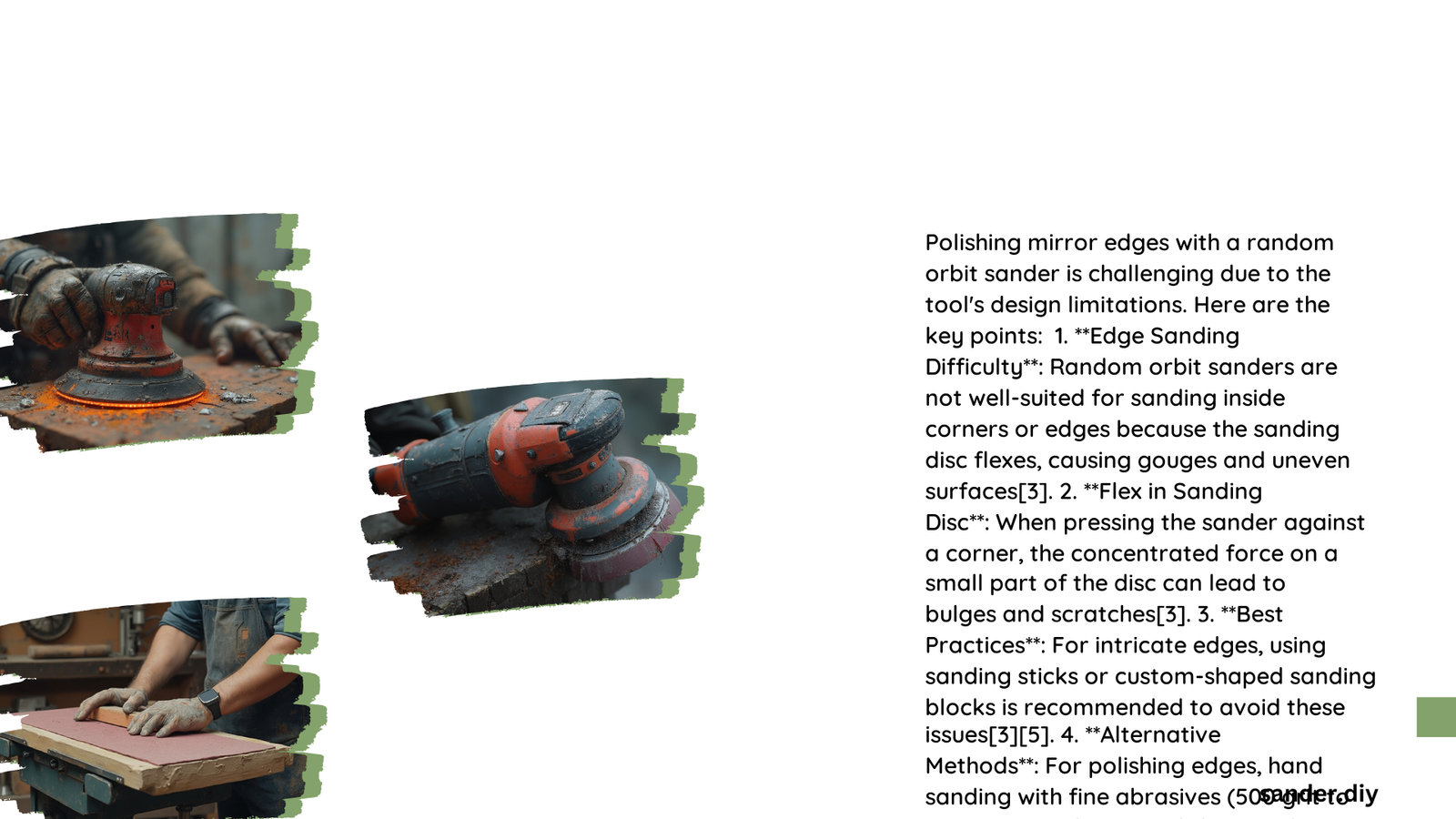Achieving a mirror-like edge finish with a random orbit sander is possible through a meticulous process involving precise grit progression, controlled movement, and specialized techniques. Professional woodworkers and metalworkers can transform rough surfaces into ultra-smooth, reflective edges by understanding the nuanced approach required for exceptional polishing results.
What Makes Random Orbit Sander Suitable for Mirror Edge Polishing?
Random orbit sanders offer unique advantages for creating mirror-like edges due to their unpredictable orbital motion. This motion prevents consistent scratch patterns, reducing visible swirl marks and enabling smoother surface transitions.
Key Characteristics of Random Orbit Sanders for Polishing
| Feature | Benefit | Impact on Mirror Edge |
|---|---|---|
| Random Orbital Motion | Prevents Consistent Scratches | Smoother Surface Finish |
| Variable Speed Control | Precision Polishing | Better Edge Quality |
| Interchangeable Pads | Versatile Polishing Options | Adaptable to Different Materials |
How to Prepare for Mirror Edge Polishing?

Essential Equipment Checklist
- Random orbit sander
- Progressively graded sandpaper (120-2000 grit)
- Foam and felt polishing pads
- Buffing compounds
- Protective gear (safety glasses, dust mask)
What Grit Progression Ensures Mirror-Like Finish?
Achieving a mirror edge requires systematic grit progression:
- Initial Rough Sanding
- Start with 120-220 grit sandpaper
- Remove significant surface imperfections
-
Ensure even material removal
-
Intermediate Smoothing
- Progress through 320, 400, 600 grits
- Gradually reduce surface roughness
-
Maintain consistent sanding pressure
-
Fine Polishing
- Use 800-2000 grit sandpaper
- Create ultra-smooth surface
- Prepare for final buffing
What Techniques Maximize Polishing Effectiveness?
Critical Polishing Techniques
- Controlled Movement: Move sander slowly (1 inch per second)
- Overlap Passes: Cover 50% of previous sanding area
- Light Pressure: Allow sander’s weight to do the work
- Consistent Speed: Maintain 3,000-6,000 RPM
How to Avoid Common Polishing Mistakes?
Potential Pitfalls and Solutions
- Swirl Marks:
- Cause: Excessive pressure, rapid movement
-
Solution: Gentle, controlled sanding technique
-
Uneven Surface:
- Cause: Inconsistent grit progression
- Solution: Thoroughly complete each grit level
What Are Final Polishing Recommendations?
Professional Finishing Steps
- Use specialized buffing pads
- Apply fine polishing compound
- Perform final hand-buffing for intricate areas
- Clean surface thoroughly between stages
Cost and Investment Considerations
Estimated Polishing Setup Cost:
– Random Orbit Sander: $50-$150
– Sandpaper Set: $20-$50
– Buffing Pads: $10-$30
Pro Tips for Mirror Edge Success
- Always work in a well-ventilated area
- Use dust extraction system
- Replace sandpaper frequently
- Maintain consistent technique
Conclusion
Polishing mirror edges with a random orbit sander requires patience, technique, and systematic approach. By following professional guidelines and investing time in proper progression, anyone can achieve exceptional, mirror-like surface finishes.
